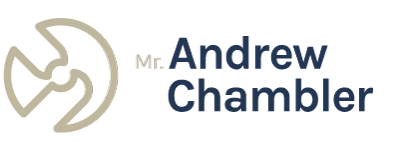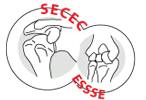Patient feature article – Mr Steve Gladston
As a former Royal Navy helicopter pilot, Steve Gladston was used to making decisions quickly once he had all the relevant data and information. When he started to notice a problem moving his left arm to put on a coat, he realised he needed to get help. Read Steve’s story here.
Having flown for the Royal Navy for 16 years, Steve had set up his own business in 2007. While thoroughly enjoying the challenges the new role gave, he was aware that he was spending more time than he’d like sitting at a desk. It was very different from the physically active and demanding role he had enjoyed in the Navy.
He first noticed a problem with his shoulder when he found himself struggling to put on his coat by himself. Although his left shoulder just didn’t seem quite right, he was able to ignore it for a while as the demands of daily life took over. However, the problem continued to get worse, until eventually Steve was having to ask his wife to help him put on his shirts and coats, as he was unable to move his left arm enough to put them on by himself. He also started to notice the pain in his shoulder was getting worse, particularly at night, where he had to be careful to sleep on the correct side in order not to be woken by pain.
As the pain became more pronounced and the effects more obvious, he decided to research things himself. Going online to look at shoulder pain causes and treatments, he soon discovered a colleague from his Navy days, an aviation doctor, had suffered from a similar shoulder problem and had been treated successfully. Steve quickly got in touch to find out what they would suggest.
“As soon as I spoke with him and told him my symptoms,” recalls Steve, “he told me to see Andrew Chambler at Circle Bath, who had treated his shoulder pain. I trust his judgement completely, so I phoned Circle Bath to book an appointment.”
Steve had used private GP’s in the past, so although he knew there was a clear cost implication of choosing private treatment, he appreciated the benefits and advantages it offered, one of which was speed. Helicopter pilots are required to have an annual medical by a doctor to ensure their safety to fly, so Steve wanted to ensure he could access any treatment needed promptly.
In advance of his meeting with Andrew, Steve had an MRI scan of his shoulder at a day centre in London, with the results sent electronically to Circle Bath. At his appointment with Andrew, Steve’s shoulder movements and the results of the MRI scan were assessed and discussed.
“Steve was suffering from a chronic (meaning ‘long-term’) shoulder problem” says Andrew. “From my physical examination and the MRI scan, I was able to see that he had what is commonly called a ‘frozen shoulder’. The inside of the shoulder capsule was inflamed, and this may well have been triggered by tendon issues caused by repetitive movements from flying a helicopter.”
Andrew talked through three different options available to Steve; leaving it in the knowledge that it might possibly clear up by itself, cortisone injections into the joint to reduce the inflammation, or keyhole surgery.
“During our meeting, I had lots of questions for Andrew and he answered them all,” Steve says. “He was very open and honest about everything, and there was no pressure put on me to make any decisions. Of the three potential treatment options we discussed, the one that seemed to make the best sense for me was keyhole surgery, so I decided to go ahead with that.”
On the day of his surgery, Steve was in the operating theatre by 8am. Everything was once again explained to him in detail, so that he knew what to expect when he woke up. Following the surgery, he was pleasantly surprised that the pain was much less than expected. “It felt like a dull thump in the arm,” says Steve. “It was just so much better straight away. When I spoke with Andrew after the operation, he told me that on a scale of 1 – 10, with 1 being low, my shoulder inflammation was 8-9, so it definitely needed surgery to fix it.”
Despite expecting to need painkillers for the first few days in particular, Steve found that he didn’t need to take any of them. He had to rest his arm for 6 weeks, with the first 3 weeks seeing his arm kept in a sling to aid healing and recovery. Since then, suitable physiotherapy has allowed him to return to an active lifestyle, able to mow the lawn and drive again, without any pain in his shoulder.
“Seeing Andrew and choosing the surgical option was absolutely the right call” states Steve. “I don’t have pain in my shoulder anymore and I’m able to move it normally again. I cannot say enough good things about Andrew and the rest of the staff at Circle Bath. I would not hesitate to recommend them.”








